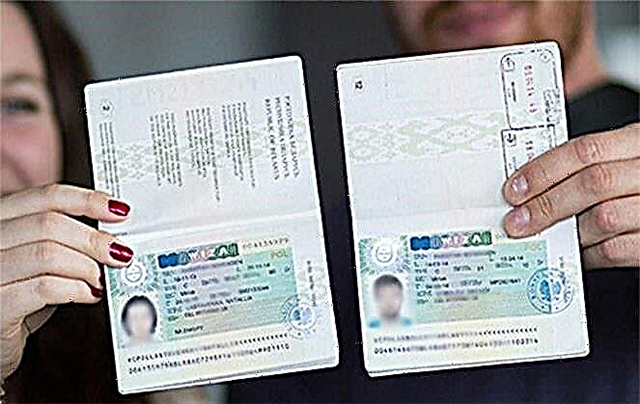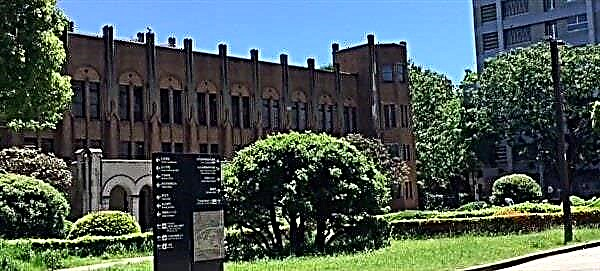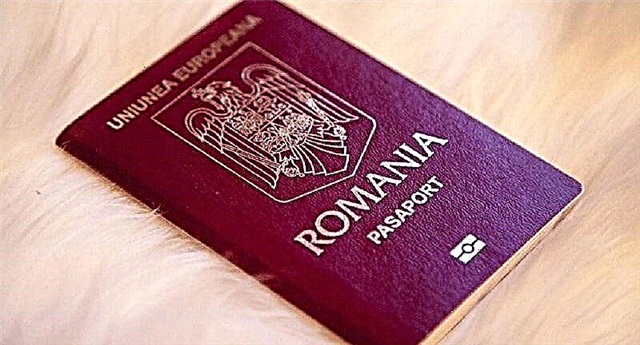Studying in Italy is a great opportunity to get a high level education in a country with the oldest academic traditions in Europe. A reasonable combination of cost and quality of study annually attracts thousands of foreign students to the country.
Despite the economic instability and the problem of unemployment, Italy is among the ten largest economies in the world. GDP per capita exceeds $ 30,000. According to the human development index, which also reflects the level of education of the population, Italy occupies the 26th position.
The advantages of studying in Italy
The main benefits of pursuing higher education in Italy include:
- State membership in the European Union and the Schengen Agreement, which opens up the possibility of visa-free travel for students to most countries of the world;
- Participation in the Bologna educational system, an extensive list of international exchange programs;
- European diploma and the possibility of official employment around the world;
- Lack of admission tests to most universities;
- The minimum list of required documents;
- The possibility of legal stay in the country for the purpose of employment within 12 months after receiving a diploma;
- Training in Italian or English;
- Low tuition fees and the opportunity to receive education for free, incl. with compensation for everyday expenses;
- Lack of compulsory academic programs, which allows students to independently choose subjects of interest;
- Long tradition of student and university community;
- The possibility of formal employment while studying;
- World leadership of universities in the quality of education in the fields of design, fashion and architecture;
- Favorable Mediterranean climate.

According to international rankings of higher education Times Higher Education and QS Rankings, 8 Italian universities are in the top 500. And the University of Bologna, the Polytechnic Institute of Milan, the Saint Anne School of Advanced Studies and the Pisa Normal School are all among the two hundred best universities in the world.
Features of higher education in Italy
The Italian education system includes 3 levels:
- Preschool: nursery and kindergarten (from 6 months to 6 years);
- School: elementary, junior and senior high schools (6-19 years old). High school education is available at a college or high school. In the first case, the student receives not only a certificate, but also a certificate of the assignment of a certain profession. Lyceums are designed for targeted preparation for university entrance;
- Higher: universities, high schools, institutes, etc.
Italian schoolchildren study for 13 years, most of them enter the university at the age of 19.

The length of study is regulated by the Bologna Process. For most undergraduate specialties, it is 3 years (less often 4). In the magistracy, students study for 2 years.
Reference! An important feature of Italian higher education is the minimum number of subjects required for study. The vast majority of directions the student chooses based on personal preferences.
You May Also Like
The academic year is divided into 2 semesters: the first one lasts from October to January, the second - from February to June. Some universities practice dividing into 3 or 4 equal semesters. Each of them ends with a session (usually in February and July). Exams are taken orally, less often in writing. The teacher determines the number of retakes individually. According to statistics, Italian universities successfully complete only 70% students, the rest are expelled due to academic failure.
The range of grades in Italy is from 0 to 30. The minimum passing grade is 18.

Types of universities and educational programs
Universities that are eligible to issue a higher education diploma in Italy are divided into 2 categories:
- University;
- Non-university.
The first group includes almost 90 universities and higher schools (specializing in postgraduate education). By the form of ownership, they can be state-owned (75%) and private (25%).
Non-university educational institutions include graduate colleges, schools of design, arts, conservatories, and national academies. Some of them are independent structural units, others are subordinate to specialized universities or relevant government departments.
Participation in the Bologna Process assumes a 3-stage model of education:
- Bachelor's degree;
- Master's degree;
- Doctorate.
The vast majority of students complete their studies at the undergraduate stage. For 3 years, you need to collect 180 credits in the system ECTS. Attestation at the end of the 1st stage is carried out by writing a thesis. As a result, the student receives a diploma of higher education in a specialty of practical orientation, which gives him the right to work in any country in Europe.

The task of the magistracy is research activity. This is not the case for some of the most in-demand specialties. In medicine, pharmaceuticals, dentistry, architecture, obtaining a diploma of the 2nd stage of education is a prerequisite for employment. The duration of master's studies is usually 2 years.
The logical conclusion of doctoral studies is the writing of a doctoral work based on the results of 3-year scientific research.
You May Also Like
Conditions for admission
Since the duration of school education in Italy is 13 years, an applicant from the post-Soviet space must not only complete 11 grades of school, but also 1 or 2 year of university or college in his homeland. Also, admission is possible after 9 classes, but subject to training in a college or technical school for at least 3 years.
The vast majority of Italian universities do not require entrance examinations. Enrollment of applicants is carried out on the basis of documents on secondary education, and the grades in the certificate do not play any role. The exception is "closed faculties" - the most demanded disciplines, the number of places for which is limited (architecture, medicine, engineering). In this case, the competition is carried out on the basis of the results of the entrance exams. Their rules are published no later than 60 days before testing.
The only exam that must be passed for admission to the university is the language one. For students planning to study in Italian, it takes place on September 1st. The CILS certificate of language proficiency at the B2 level frees you from having to take this exam.

For English-language training, it is enough to provide an IELTS certificate (at least 6-6.5 points) or TOEFL iBT (not less than 75 points).
Admission to the magistracy takes place on the basis of a bachelor's degree, which is equivalent to a document on graduation from a university in the CIS countries. Rare universities (medical) hold entrance exams.
List of required documents
Attention! The list of documents and deadlines for their submission may differ depending on the university. They usually end in April.
An approximate list of documents that a Belarusian or Russian must provide upon admission to a bachelor's degree (some of them must be legalized at the embassy):
- Secondary education certificate and annex to it with apostille and translation;
- Certificate of completion of 1 or 2 years of university or college with apostille and translation;
- Certificate with test results (USE or CT);
- Certificate of proficiency in Italian or English;
- DDV- document on the recognition of the certificate by Italy (issued at the embassy);
- A completed application form MODELLO A;
- Copy of the passport;
- Photos.
Upon admission to the 2nd stage of education, it is necessary to add to the above documents:
- A diploma confirming the availability of higher education in the chosen specialty.
- Resume with an emphasis on research work;
- Recommendations from the professors.
After entering the university, the student must apply for a study visa at the embassy. To do this, you must provide financial guarantees (not less than 413 € for each month of study) and a document confirming the availability of housing. A student visa is the basis for issuing a study residence permit upon arrival at the university.

Cost of education
Depends on the form of ownership and the region of the university, the level of education and specialty. The average cost of studying for an undergraduate degree is 800-3000 €, and master's degree - up to 4000 €.
The cost is often set individually - on the basis of documents on the financial situation of the student's family and his progress. If the annual income does not exceed 6000 €, you can count on a substantial discount.
Free education opportunity
Many international students have the opportunity to minimize the cost of studying in Italy. Sources of financial assistance are university funds, government and ministries, international funds.
Students with excellent grades or from low income families (with monthly income of up to 300 € per person), as a rule, receive a university scholarship, which covers the costs of education and living.
The state also provides sponsorship assistance to excellent students and the poor in the amount of 14000 € per year... A prerequisite for a scholarship or grant is often knowledge of the Italian language.
Internship and exchange studies. Scholarships, grants
Italian universities actively accept students from all over the world through various internships.
Many of them involve the payment of a scholarship that fully covers the costs, incl. for travel, accommodation and meals:
- SISSA Research Institute scholarships: study of physics, chemistry, mathematical analysis for a period of 1 to 12 months;
- Fabrica grants: intended for representatives of specialties in the field of creativity and culture (photography, design, music);
- Jean Monnet Grant: For Young Scientists.

Accommodation and meals for students
A small proportion of students in Italy are provided with a place in a hostel (for rent). Priority is given to low-income, freshmen and excellent students. The rest are forced to rent housing. The monthly cost of renting 1 bedroom apartments in Rome starts from 500 €, in Milan - a little more expensive.
Each student decides on nutrition independently. The average cost of this item of residence is about 300 € per month.
Top universities in the country
Top 3 universities according to independent academic rankings:
- Sapienza University of Rome (Sapienza - Università di Roma)... Founded at the beginning of the XIV century, one of the oldest universities in the world and the largest operating in the country. The number of students in 10 faculties exceeds 100 thous. (5-7% of them - foreigners). The priority areas are natural, social and human sciences.
- Technical University of Milan (Politecnico di Milano)... The best engineering university in the country with the best attractiveness index for foreigners. Consists of 17 faculties: aerospace engineering, architectural design, bioengineering, nuclear engineering, etc. More than 30 thousand university students study in 32 undergraduate specialties.
- University of Bologna (Università di Bologna)... The oldest functioning university in the world, the founder of the European education system. Includes over 20 faculties. Member of the Coimbra Group, Europaeum, Utrecht Network. The number of students who study on several campuses throughout the country and even abroad exceeds 80 thousand. The university owns a large library and 14 museums.

Reference! In addition to Bologna, the country's oldest universities are located in Florence, Siena, Pisa, Macerata.
Reviews
Edward: Thanks to Italian legislation, which allows official employment up to 20 hours a week, from the 2nd year I worked part-time in a large international company and continued to study. Here he stayed to work after graduating from university.
Alexandra: Exams are passed orally, but there are no usual tickets. The teacher asks a question to which you must immediately give a detailed answer. There are not enough lecture notes for preparation; in addition, you need to use textbooks.
Higher education in Italy opens up for students ample opportunities for research and practical work during their studies, as well as the prospects for good employment after graduation.











